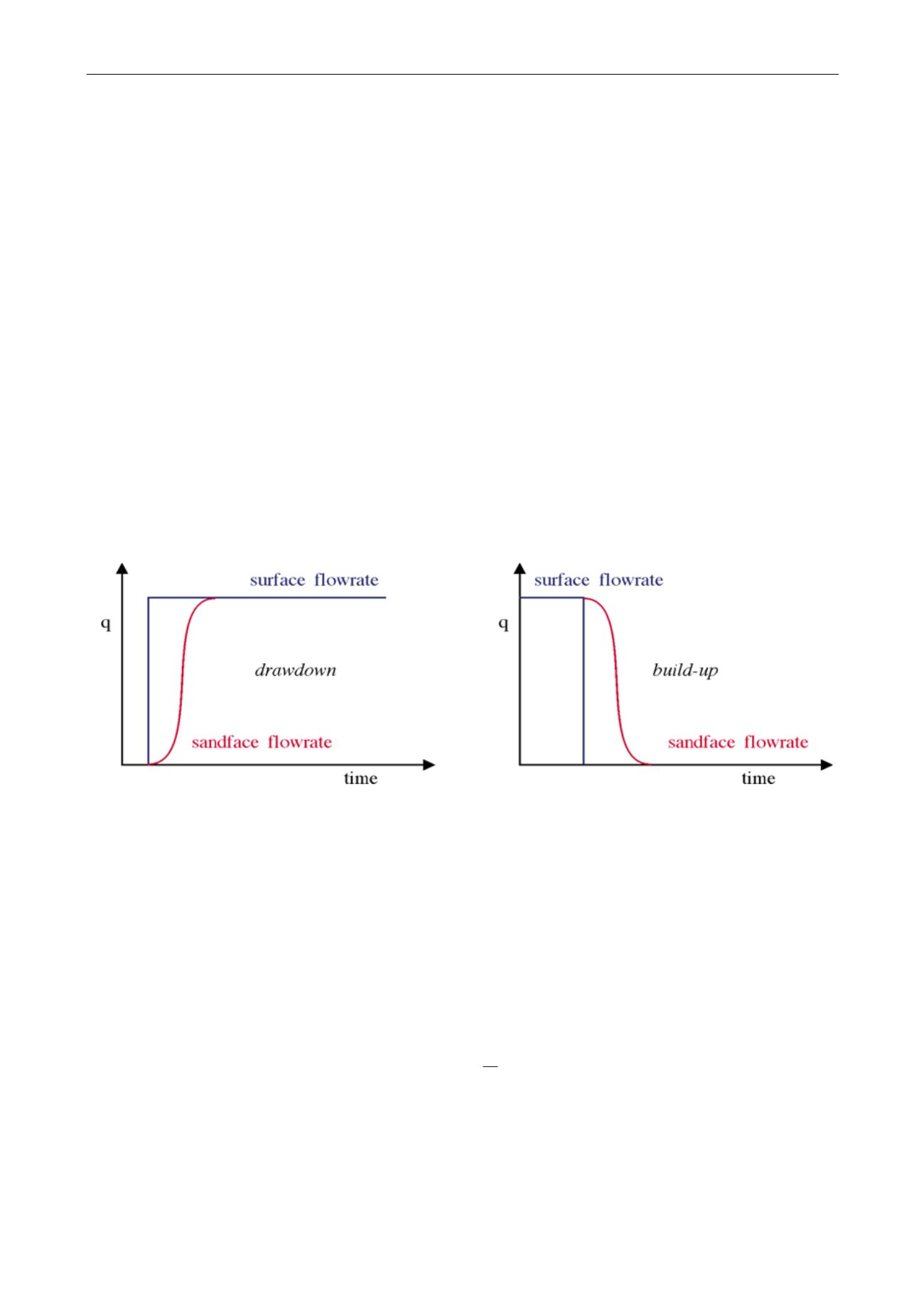

Dynamic Data Analysis – v5.12.01 - © KAPPA 1988-2017
Chapte
r 2 – T heory- p22/743
2.D
Wellbore storage and skin
2.D.1
Wellbore storage
In most cases the valve used to open the well and shut it in is not exactly at sandface level. In
most cases it will be at surface. Even in the case of downhole shut in there is always a volume
that will act as a cushion between the sandface and the valve. As a result, wellbore dynamics
create a time lag between the sandface and the surface, or the valve, or the choke. This is
what we generally call wellbore storage.
Let us take the case of a well opened and shut in at surface. When you open the well the initial
surface production will be coming from the decompression of the fluid trapped in the wellbore.
In the initial seconds or minutes of the flow the sandface will not even ‘know’ that the well is
opened and the sandface rate will remain virtually zero. Naturally, at some stage we get to a
mass equilibrium, i.e. the sandface mass rate reaches the surface mass rate. This is the time
of the end of the wellbore storage. Conversely, if the well is shut in at surface, the surface rate
will go immediately to zero while the sandface does not know about it. The time of wellbore
storage is this transition time between the effective shut-in time and the time at which the
reservoir stops flowing into the well.
Fig. 2.D.1 – Wellbore storage
There are two main types of wellbore storage. The first one is modelled by the compression or
decompression of the wellbore fluid in the wellbore volume. This is expressed as:
Wellbore storage by fluid compression:
ww
cVC
Where
V
w
is the wellbore volume and
c
w
the fluid compressibility.
The second type of wellbore storage is linked to the rise of the liquid level present in the
wellbore. A simplified version is expressed as:
Wellbore storage from liquid level:
A
C
144
Where
A
is the flow area at the liquid interface,
is the fluid density.
















